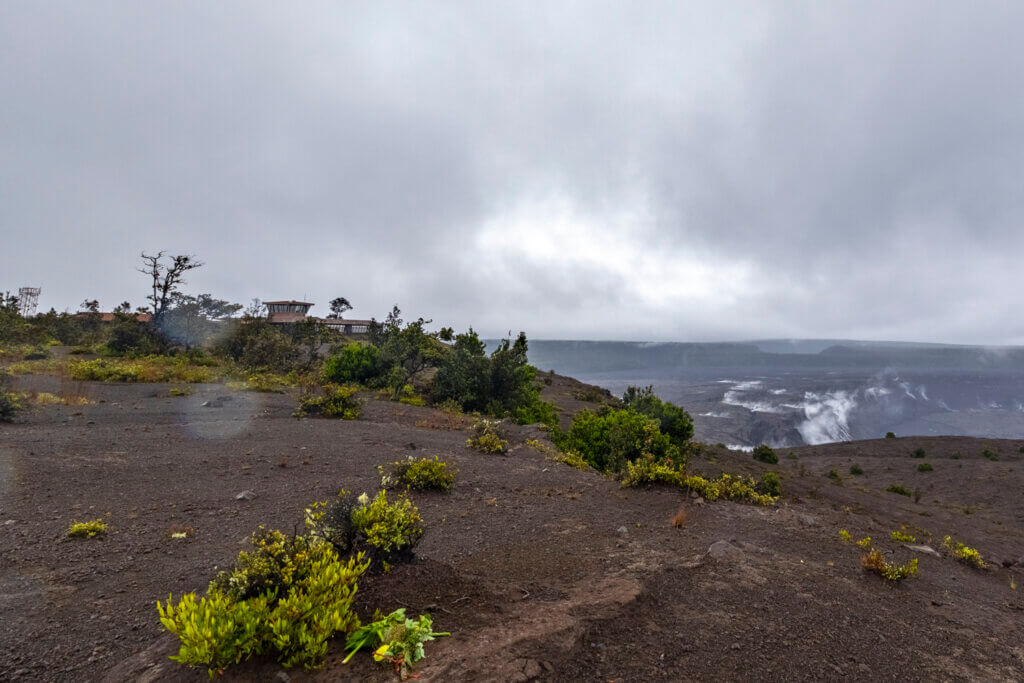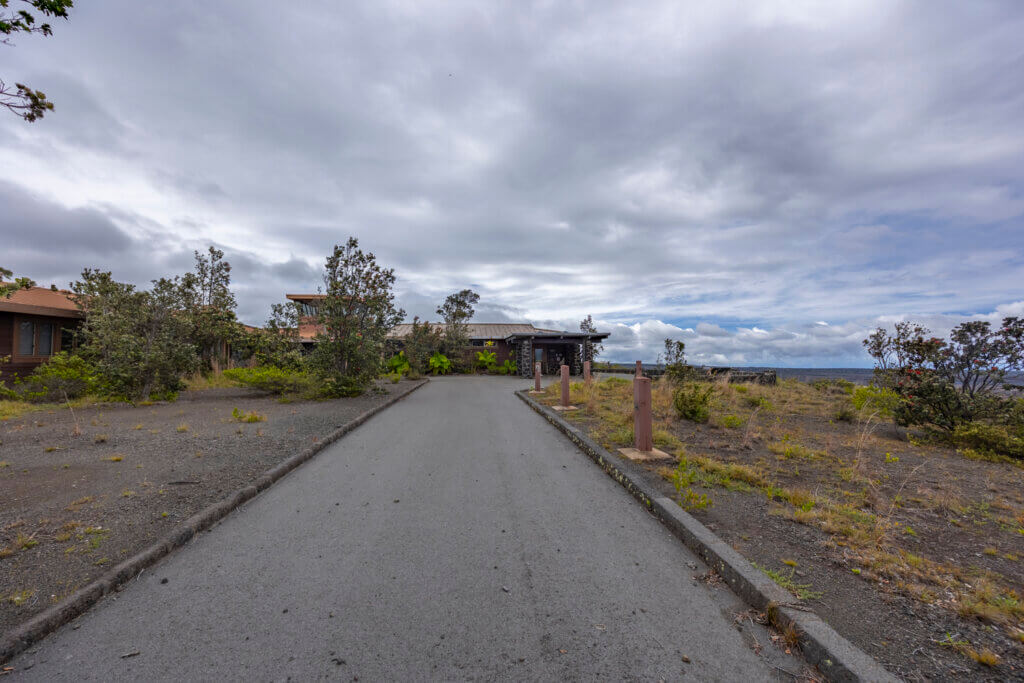Six years ago (!!) Kilauea’s destructive 2018 Lower Puna Eruption drastically changed Halema’uma’u Crater and, in doing so, irreparably damaged facilities and infrastructure in the area. However, after much planning, a Kilauea summit revitalization project is getting underway to finally remove unsalvagable structures and make general improvements.
For over 100 years, the Hawaiian Volcano Observatory and its predecessor organization have operated around Kilauea’s Halema’uma’u Crater – the volcano’s summit caldera. However, in 2018, Kilauea’s Lower Puna Eruption caused magma levels in Halema’uma’u Crater to fall significantly as magma surged into the Lower East Rift Zone. The decrease was enough to bring magma levels below the area’s water table, which allowed water to make its way back into the area, make contact with the magma, and trigger explosive eruptions not seen in 94 years.
As a result of the explosions and seismic activity, the Hawaiian Volcano Observatory’s facilities at the Jagger Museum at Uekahuna Bluff sustained substantial structural damage and was abandoned. Since then, the Hawaii Volcano Observatory has been working out of temporary offices far away in downtown Hilo while the Jagger Museum sat empty. Visitors could still use the restroom here, but the rest of the building has been condemned and blocked from public access. What would become of the area was unknown (at least to me) until now as the Kilauea Summit revitalization project kicks off.
Kilauea Summit Revitalization Project Kicks-Off
The most obvious work to be done as the Kilauea Summit revitalization project kicks off is the removal of the damaged Hawaiian Volcano Observatory building. In fact, this is the focus of the initial part of this two-phase project. However, once the Observatory and associated Jagger Museum are gone, they won’t be replaced – at least not at this location. Instead, Park officials state that their intent is to restore Uekahuna Bluff to a more natural state.
What this will look like is the removal of the primary structures that made up the Observatory and Museum. However, the restrooms next to the Museum will be refurbished and reopened, while the overlook area will remain and will be improved upon. Interpretive displays will also be added, though they’ll be designed to minimize visual impacts. A natural surface trail will also be added to connect the overlook to the Crater Rim Trail.
Phase 1 of the Kilauea Summit revitalization project will also include the re-alignment of the Chain of Craters Drive to improve safety and reduce traffic congestion at the park entrance. This will include the construction of a roundabout near the park entrance.
All of the above work is scheduled to take approximately two years to complete, though a new eruption could extend this timeline, depending on how disruptive it may be.
Phase 2
The second portion of the Kilauea Summit revitalization project will focus on the existing visitor center near the park entrance. Specifically, the entire facility, including its exterior restrooms, will be completely overhauled. Naturally, this will trigger temporary closures of these facilities, though Phase 2 work isn’t expected to begin until “fall 2024.”
Hawaiian Volcano Observatory
While not part of the Kilauea Summit revitalization project, work on replacement facilities is related to it. After all, the primary focus of it is the removal of the old observatory at Halema’uma’u Crater. That said, USGS won’t be building an exact replacement for the previous facility. Instead, they’re building a headquarters building next to the University of Hawaii at Hilo that will accomodate both the Hawaiian Volcano Observatory and the Pacific Islands Ecosystem Research Center. That said, a new field office is being built for the Observatory west of Kilauea Military Camp. The new field office will be much smaller than the original Observatory headquarters at Jagger, but will facilitate all of its critical on-site science and observing functions.
Visitor Disruptions
A project of this scale is going to have visitor disruptions no matter how well planned out it is. At this point in time, the following closures and restrictions are in place:
- Uekahuna Bluff parking lot partial closure (staging area for construction equipment)
- Prohibition on vehicles 25 feet in length or longer west of Kilauea Military Camp (Crater Rim Drive West)
- Partial closure of Kilauea Visitor Center overflow parking lot
- Uekahuna Bluff (Jagger Museum) comfort stations/restrooms temporarily closed
Park officials say that other closures and disruptions are possible, and they encourage visitors to check the park’s website for the latest updates. They also ask visitors to be patient, as the reduction in parking will most certainly make finding parking more difficult, while construction work will cause additional congestion along impacted roadways.
Kilauea Summit Revitalization Project, Final Thoughts
This work has been a long time coming, and it’ll be interesting to see the final results. I will say, congestion in the park has become a significant issue. During my most recent visit, popular areas, such as Thurston Lava Tube, were subject to very high levels of traffic. Mind you, this was during a time when Kilauea wasn’t erupting. Sure, these changes won’t impact all high-traffic areas, but I expect these quality-of-life improvements will have positive impacts. Of course, there’s still much to enjoy in the park away from the crowds, and I’m very much looking forward to seeing Uekahuna Bluff in a more natural state, even if I’ll miss the old Observatory there.
As to whether Kilauea will erupt again soon or not, the volcano has been in a state of unrest for quite some time now, though things have heightened enough for the Observatory to raise alert levels. Though activity has subsided in recent days, if current trends continue, the next eruption may be in Kilauea’s Southwest Rift Zone – the area around the Hilina Pali. But, of course, volcanoes are predictably unpredictable. For the latest, check out the Hawaiian Volcano Observatory’s Kilauea Updates Page.


